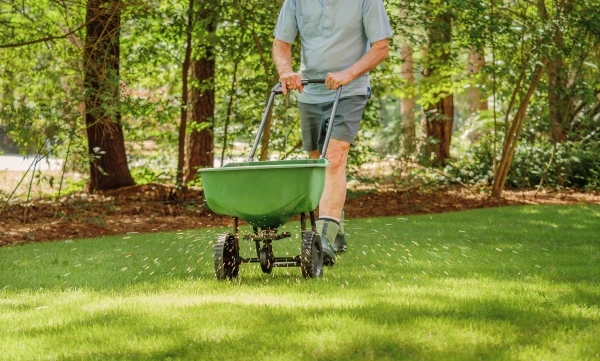
The Grounds Guys provide expert advice on spring lawn fertilization.
|
Last Updated April 28, 2023
Did you know that the best time to put fertilizer down in spring depends on whether you have cool- or warm-season grass? It’s true! Cool-season grasses, or lawns that thrive in cooler temperatures, are best to fertilize in the fall when the growing season is at its peak. Of course, if you missed fertilizing last fall or if your lawn just doesn’t seem to be doing too well, you can also add a small amount of slow-release fertilizer in the spring. For warm-season grasses that like the heat, it’s important to fertilize once active growth starts, in the spring. So, when is the best time to fertilize grass in the spring? Fertilizing in mid to late spring is ideal. This will ensure healthy growth and discourage weeds all season long.
Ready to get your spring landscaping off to a great start? When the best time to apply fertilizer in the spring arrives, here are a few tips you’ll need to handle fertilizer safely and some other things you can do to encourage healthy lawn growth.
Table of Contents:
Handle Fertilizer with Care
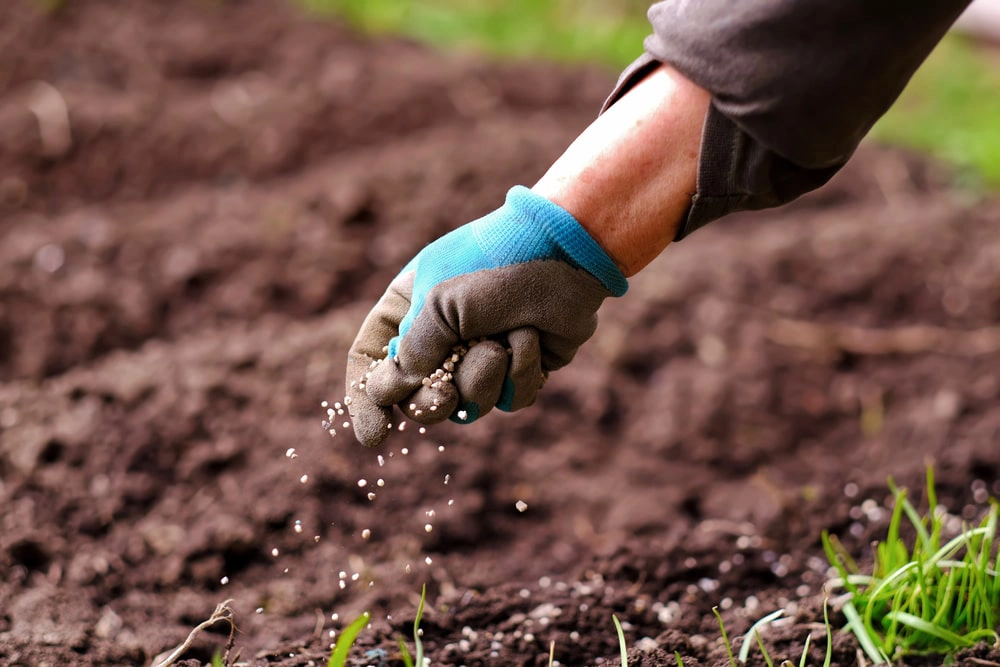
Feeding your lawn with fertilizer is essential to a green, healthy appearance. But it’s important to handle all fertilizers with proper care and safety measures in mind. Before you begin, be sure that you read and follow the package instructions carefully. It’s also important to wear gloves and safety glasses while handling fertilizer, as most types contain chemicals that can irritate your skin and eyes. During application, keep pets and children out of the area and take other precautions, as needed. After applying the fertilizer, be sure to sweep up stray granules from walkways and wipe down your garden equipment and the soles of your shoes. This will help prevent unintended exposure to the substances in the fertilizer. Finally, store unused fertilizer in a secure, dry place out of the reach of pets and children. You can find more information about fertilizer safety and how often to fertilize lawn grass at this link.
Grass Clippings
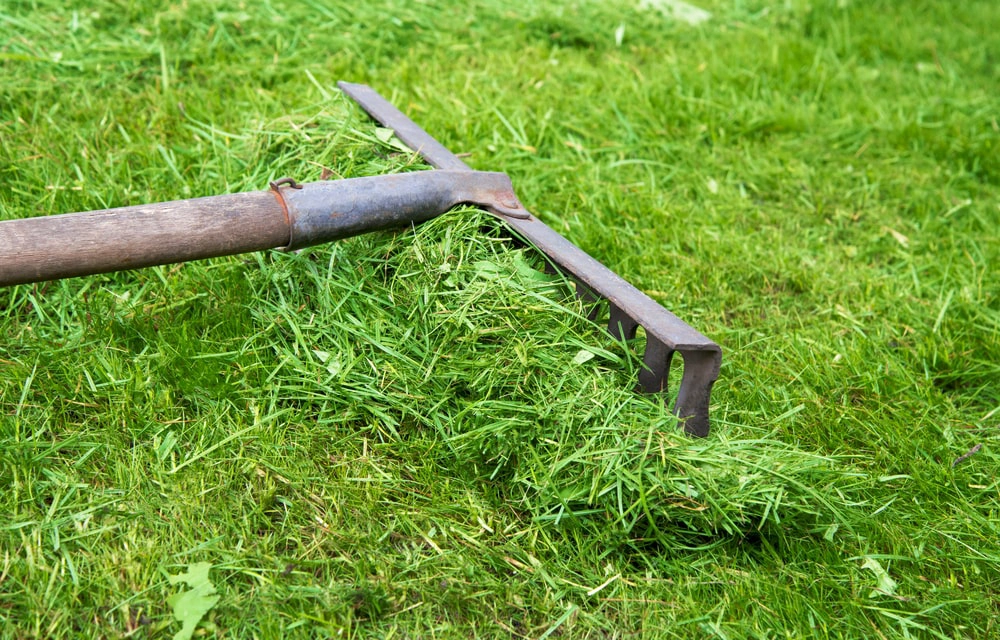
Having a lawn means that you are going to need a plan to deal with grass clippings. While you may be tempted to simply toss them in the garbage, you might consider putting those clippings to better use instead! Grass clippings serve as a great natural fertilizer, helping lawns grow lush and green. By simply leaving the grass clippings on the lawn after cutting, you can add needed nitrogen to the soil and use the moisture stored in the clippings to help feed and water the freshly cut grass. If you have a garden, you can also use grass clippings as compost to help feed a wide variety of plants.
Related Topic: Creating a Beautiful Spring Lawn & Garden
Add Compost to Your Lawn
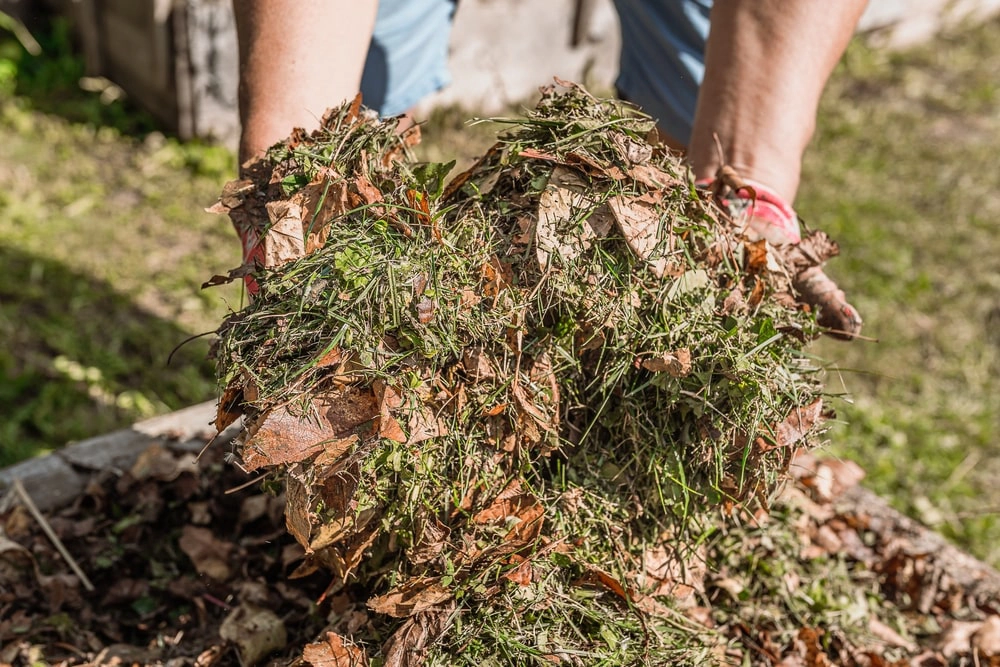
For a natural approach to a healthy lawn, you can also add compost to improve grass growth and appearance. By definition, compost is decayed organic matter that plants need to grow. Adding compost to a lawn or garden can help improve the condition of the soil, breaking up compacted areas and encouraging the growth of beneficial microorganisms. You can create compost out of a wide range of kitchen scraps, paper and cardboard waste, and grass clippings. With a little maintenance and time, you can turn a pile of otherwise unused organic matter into fertilizer your lawn will love.
Related Topic: The Benefits of Adding Compost to Your Lawn
Overseed
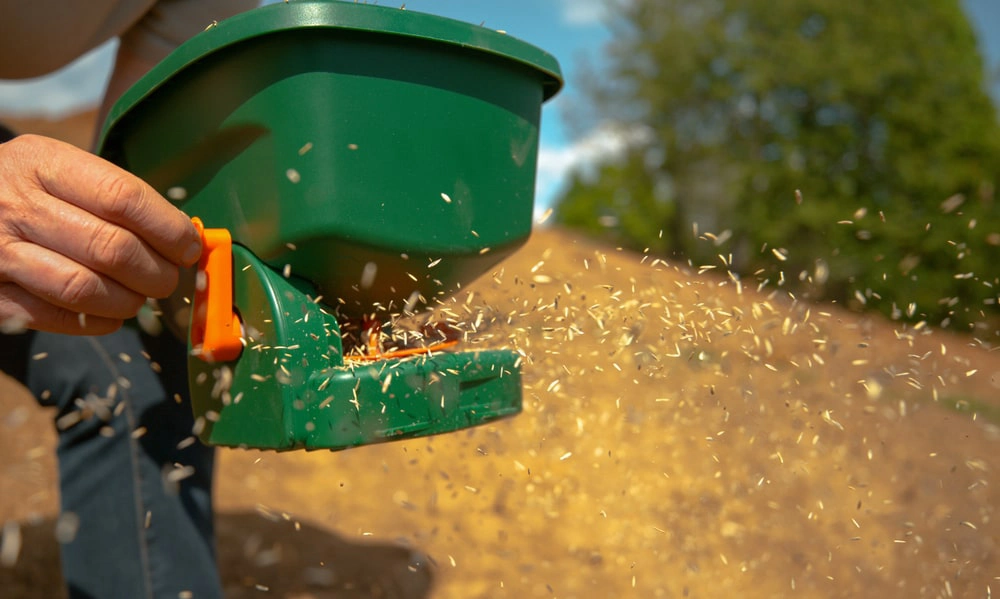
If your lawn is looking a little patchy, have you considered overseeding it? Overseeding is a method to improve the health and appearance of a lawn without needing to completely remove the grass and start over. It can help correct issues like brown or bare patches, or allow you to switch between warm and cool season grasses for a green lawn year-round. To overseed a lawn, you should begin by preparing the ground. Mow the existing grass to a short height, and then rake the areas you want to seed to break up the soil. Then, add compost or enriched soil, grass seed, and water, and watch your new grass sprout up within the next few days.
Spring is also a time when pre-emergent herbicide is applied to control crabgrass. Generally, once a pre-emergent is put down in the spring, you cannot effectively seed until fall. Technically, you could seed 16 weeks from the application, but in most regions that puts you in the hottest part of summer. Seeding is not advisable at that time. If you choose to seed, hold off on the pre-emergent treatment. You can treat the crabgrass that comes up after the newly planted grass has been mowed several times
Get Professional Lawn Fertilization Assistance
Even though fertilizing your lawn is an important part of regular lawn maintenance, it does take time and know-how to get the job done. Knowing how and when to fertilize yard plants and grass can be a challenge. If you’re still wondering when is the best time to fertilize the lawn in spring, or asking if can you over-fertilize your lawn, it may be time to call in someone who knows the answers!
At The Grounds Guys, our team of lawn maintenance pros can test your soil, recommend the right fertilizer for your type of grass, and apply it for you when the time is right. Contact us today to request a free estimate and learn about the other residential landscaping services we offer.